It is summer again and what is more refreshing during summer than a relaxing soak in your pool right? But when you get into the pool and spot that the level of water is not equal on all sides, it is disappointing. The cause of this unequal water level of your above-ground pool is the uneven ground underneath it.
So, in this post, we will discuss one of the most useful above ground pool ideas to help you level up the ground underneath your above ground pool when it has water in it.
How to Level the Ground Under Your Pool?
The more common way to do this is to drain the entire water, disassemble the pool, and then work on leveling the ground.
However, that process is way too much hassle and there is an alternative to do that. However, this job is a little hard and will need two people to do. After that, you can grab a shovel, filler a hose and work gloves to get started.
1. Drain A Little Water
It is not possible to fix the ground under the pool without draining a little water because that will not only make the load of the pool heavier and difficult for you to proceed with but also lead to needless splashing of water when you lift the slab. So, drain a little water from the pool until it is half full before you move on to the next step.
2. Remove the Blocks
The next thing that you need to do is remove the slabs. You might remember that when you first installed the pool, you had put blocks under the slab to level the base for the pool. So, in this step, you need to remove that. It is these blocks that are causing the problem; hence it is important that you get rid of the old ones to make place for the replacements.
3. Lift the Slab of The Pool
To level your pool, you will need to reach under the slab and put in the new leveling blocks. So, to do that, you need to lift it. Now how can you lift a heavy pool? Take a shovel and slip in the tip of the shovel under the slab and push down the handle at a slight angle, you will see that the tip of the shovel has lifted the slab. Make sure that you are doing this for the side that is on the lower end.
4. Replace the Old Blocks
Now that the slab is up, you will need to replace the blocks. Since you are holding up the slab, you will need someone else to replace the blocks. This is where the second person comes in handy. While you are holding it up, they will replace the block. It might be a little difficult to get the block in so they can use a hammer to make it easier.
5. Repeat for All the Blocks
Once done with the previous step, you will need to repeat the same process for all the other sets of leveling blocks under the slab.
6. Fill in The Hole with Soil
Now that you are done with replacing the blocks, you will see that the place where you held the shovel to lift the slabs has a cavity left behind that needs to be filled up to ensure better support for your pool. You can use soil to do that work. Take a handful of soil and make sure it is slightly wet (so that they stick together) then carefully insert it into the cavity.
7. Fill Up the Pool
You are above ground pool is now ready to be used again. Take the hose that asked you to bring in along with the other tools and fill up the pool once again.
We hope this guide was easy enough for you to understand. Pools are an excellent escape from the scorching heat of summer so before you get one installed in your front yard or backyard, make sure that you have checked the ground is leveled because doing the same once the pool has been established is a bit hard work.
It is also true that even if your ground was leveled in the beginning, it is possible that over time, with use, it gets imbalanced. Even in that case, you do not need to worry because this hack is going to help you fix your above ground pool in no time.

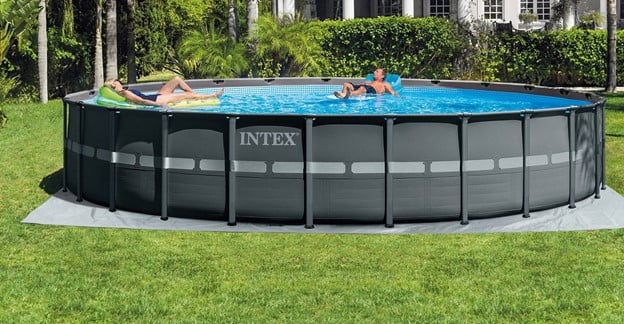
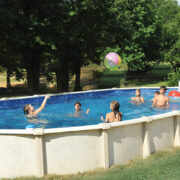
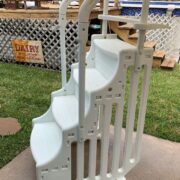

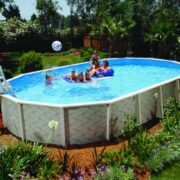
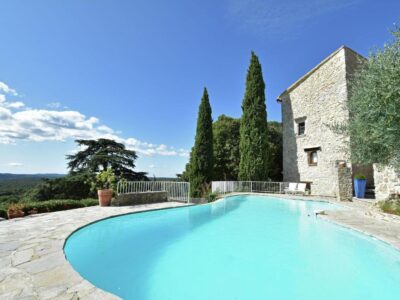

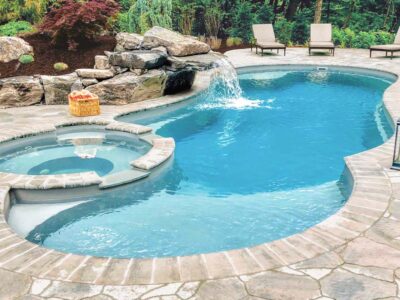

[…] have provided numerous above-ground pool leveling hacks to make your pool installation journey smooth and […]
[…] Gorilla Pad is a cool above-ground pool leveling hack, which is a durable and protective layer that is placed underneath the pool liner. It acts as a […]
[…] this blog post, we will explore the advantages and disadvantages, as well as some above-ground pool leveling hacks of using a tarp in the pool, to help you make an informed […]
[…] Doing so ensures your pool remains level and protected, and it’s one of the simplest yet effective above-ground pool leveling tips. […]
[…] this article, we will help you achieve a perfectly leveled pool and provide numerous tips for leveling an above-ground pool, ensuring you’re well-equipped to handle this […]